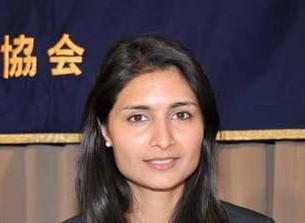Issue:
JAPAN’S RANKING IN GENDER DISPARITY IS NOTHING TO BE PROUD OF, SAYS A NEW REPORT

It should be a bitter pill for Japan to swallow: the second richest economy in Asia, with its modern society and state of the art technology, ranked far below lower income countries such as the Philippines and Sri Lanka.
But that is exactly where Japan has been placed when it comes to women’s access to national resources and opportunities in a prestigious global ranking index. The latest Global Gender Gap Report by the World Economic Forum (WEF), which determines a country’s global competitiveness by its ability to tap into half of its human capital, placed Japan 101 among 130 countries. (The Philippines, Japan’s Asian neighbor, was ranked at number 8 and particularly recognized for dramatically narrowing the gap between men and women, especially in access to health and education.)
Since 2005, the Geneva based forum’s report has been analyzing data compiled by leading economic and development organizations such as the World Bank, providing evidence that closing the gender gap is not only a matter of human rights and equity, it is also one of economic efficiency.
Saadia Zahidi, Pakistan born economist and founder of the report, was in Tokyo last November to present the latest findings and explain why Japan is doing so badly in two of the four main categories female access to economic opportunity and political empowerment while taking major strides in access to higher education and health. Ironically, it seems Japan has been doing a great job at creating a pool of talented female workers that never seem to get join their male counterparts at the top.
In 2012, WEF began attempting to narrow global gender gaps, with Zahidi proposing badly needed reform in countries that are particularly lagging. Japan, Mexico and Turkey were picked as regional showcases, with a 10 percent reduction in national gender disparity rates over three years set as a target. If Zahidi succeeds, then will long suffering gender equality advocates in Japan be finally getting a voice?
“A 10 percent target to narrow gender disparity is an ambitious task,” she acknowledged at an FCCJ press event. A key step in this direction was the launch of a “task force” to guide and work for concrete results on home ground. Tokyo’s task force is comprised of respected gender equality economic and social experts from the public and private sector as well as grass roots organizations and the media.
A key strategy of the appointed panel is to create leadership groups that will be in charge of reversing gender gaps in the most crucial areas that threaten national economic growth ageing, industrial decline and political representation
According to Zahidi, leveraging the talents of women, who now comprise half of all college graduates and take up half of the global entry level positions in some major industries, has proven to be crucial to development. The report states that companies benefit by successfully integrating the female half of the available talent pool across their internal leadership structures, and refers to indicators that prove women may have a propensity for making more inclusive, informed decisions and for engaging in less risky behavior; there fore making them valuable contributors to national growth.
The WEF message arrives at a crucial time in Japan. “The momentum is here,” said Zahidi. Grappling with years of GDP figures below two percent, slowed by a lack of innovative ideas, with pessimism exacerbated by a rapidly dwindling working age population, industry has belatedly begun tapping into its long side lined female labor force, even though this may mean drastic changes in the deeply ingrained male dominated employment systems and policy making.
One glaring number that underscores the desperate need for reform is Japan’s startlingly low birth rates 1.3 children per woman, conspicuous even in the industrialized world. Japanese women, faced with few career opportunities and a lack of affordable childcare, are increasingly marrying late and having fewer children. The report highlights this issue: a case in point is the frustratingly weak impact of Japan’s Paternity Leave regulation that has failed to encourage more men to take time off.
So who should Japan look at as role models? Iceland holds the top position, boosted by its high grades in education and health. In fact, Nordic countries, including Sweden and Norway, have shown that closing the gap in economic participation have led to higher and rising birth rates, fewer problems with ageing in the future and higher labor activity leading to a more robust economy.
Japan’s rank is 81 in education attainment and even higher, at 34, in the health and survival section. But what dragged it down to its 101 overall ranking was its 110th place in the area of economic participation and opportunity, based on the huge difference women get paid at 0.6 the salary of men in earned income.
That’s not all. Japan has been identified as one of the Asia Pacific region’s 10 lowest performing countries in gender disparity in decision making positions, based on the ratio of female to male legislators, senior officials and managers a terrifying 9:91.
This is where Japan has been left in the dust when compared to Sri Lanka, a country with a per capita income less than one quarter of Japan, that not only boasts two strong female heads of state, but whose gap in the same category is 24:76, according to the WEF.
But if the shame of lagging so far behind isn’t enough of a wake up call, there’s another figure that should get Japan’s male leaders’ attention: according to the data compiled by WEB, closing the gender gap in employment in would boost Japan’s stagnant GDP by as much as 16 percent.
Suvendrini Kakuchi is a Sri Lankan reporter for Inter Press Service, an international wire service, and a regular commentator on Asian issues for Japanese publications and television.

